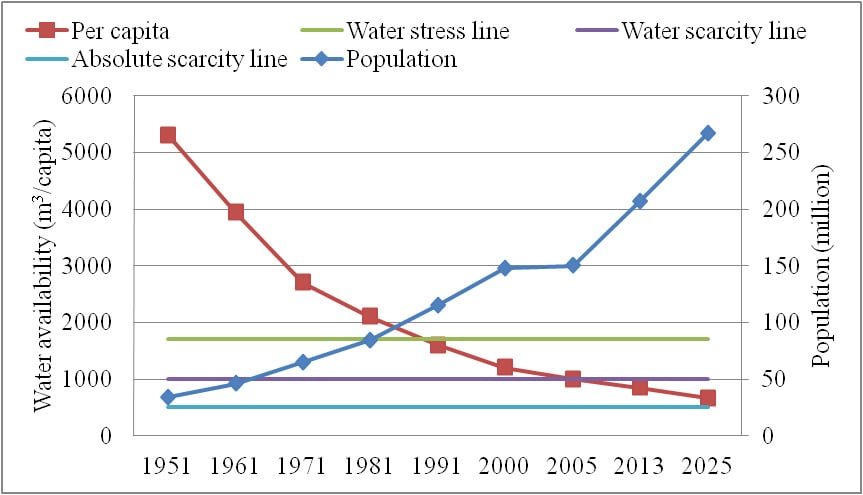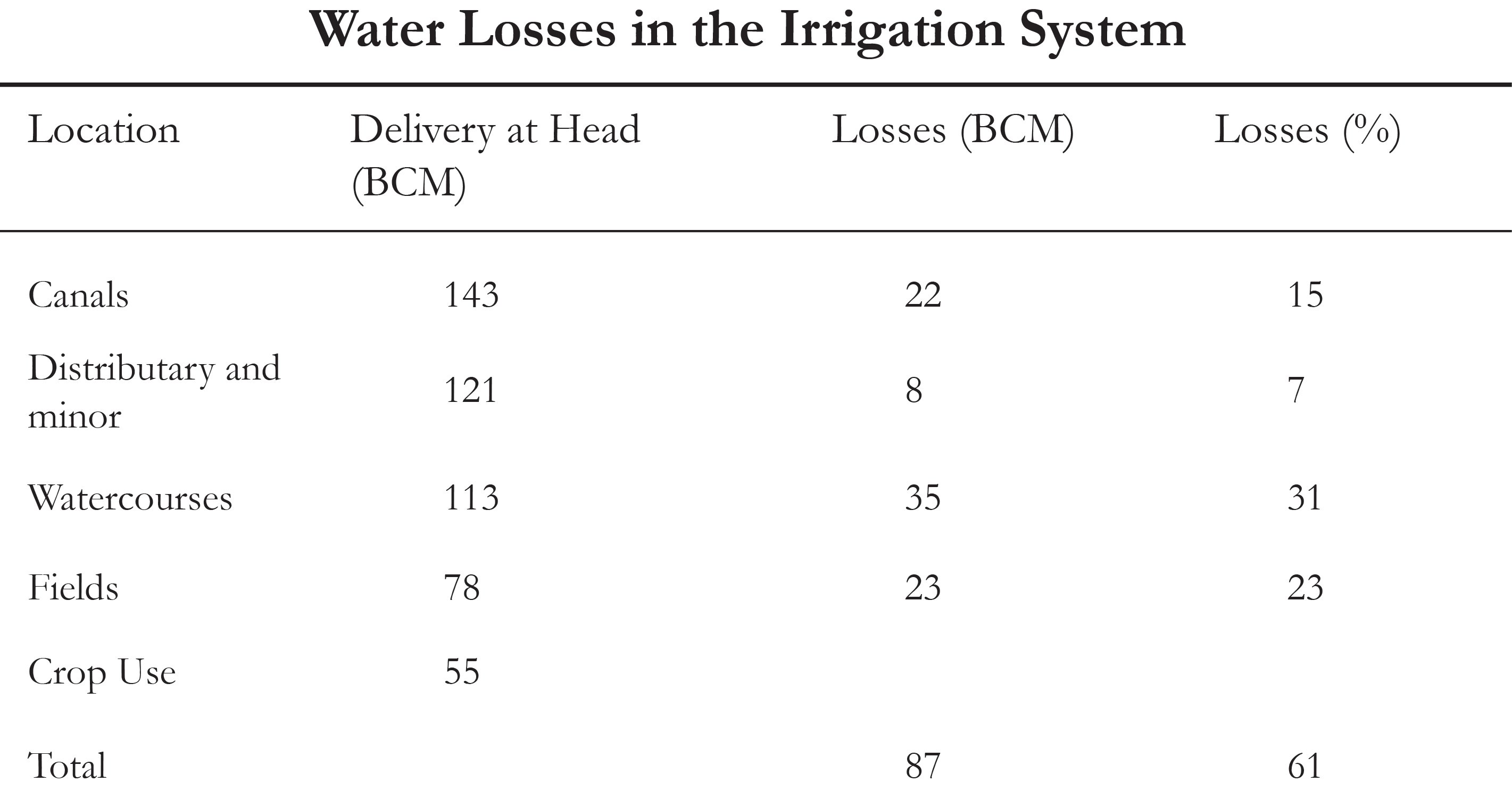If we were to divide Pakistan’s water crisis into two categories, they would be: (i) water scarcity and (ii) water quality degradation. Over the past several years, by all indicators, Pakistan is quickly and alarmingly becoming a water-scarce country.
In 1950, the per capita water availability in Pakistan was over 5,000 m3. In 1990, that capacity fell, bringing the country dangerously close to the “water-stress line” and in 2005, it crossed the “water-scarcity line”.
If the present situation continues, it will approach the absolute “water-scarcity line” by 2025. In other words, Pakistan will run dry and no one of its 207 million population will be immune from the disaster.

The gap between water availability and demand is widening. In 2004, it was 11 per cent. By 2025, that number will go up to 35 per cent, which is worrying for a country that is considered to have the most water-intensive economy in the world.
The main reasons for depleting water resources are: (i) population growth, (ii) inadequate storage facilities (iii) silting up the existing reservoirs due to lack of watershed management activities (iv) low system efficiency, as more than 60 per cent of the water is lost during conveyance and application in the field (v) groundwater depletion and (vi) unutilised potential of hill torrents.

Another issue is the quality of the surface and groundwater that has a direct impact on the health and well-being of the people.
According to the survey conducted by the Pakistan Council of Research in Water Resources (PCRWR), during 2015-16, about 70 per cent of the samples were found unsafe for human consumption in 24 major cities. That figure alone should make jolt us to take notice. The major contaminants found were bacteria, arsenic, nitrate and fluoride.
Interestingly, Pakistan is dependent on a single source for water — the Indus Basin, where water flows downstream from India to Pakistan. More than 90 per cent of the country’s drinking water comes from groundwater, which is being recharged by the extensive irrigation network of the Indus Basin.
The monitoring of the surface water bodies, particularly the eastern rivers of Ravi and Sutlej shows the presence of all kind of contaminants such as microbiological, physicochemical, heavy metal and even Persistent Organic Pollutants (POPs). These contaminants have severe impacts on human health and aquatic life.
Pakistan can learn from other water-stressed countries that have taken adequate water management measures. Also, countries like Singapore and Japan put a price on water consumption. A 2017 UN water report states that in “a country like Pakistan water is almost a free commodity. Unlike electricity, there are no water meters in houses where people pay according to usage. Thus, there is enormous, unmeasured water wastage. To sensitise the public on water wastage it is critical that water usage is metered.”
As grim as the picture maybe, there is, however, a way forward. The government of Pakistan can work towards (i) controlling the increase in population and, (ii) constructing new reservoirs.
A water shortfall of over 30 per cent in 2025 means further storage requirements of the order of 22 million acre-feet (MAF) i.e. 3-4 large dams. Therefore, there is dire need to develop new storage reservoirs.
The Pakistan Vision 2025, a policy document prepared by the Ministry of Planning Development and Reform, set a target of improving the efficiency in existing water usage in agriculture by 20 per cent. This can be achieved by improving the conveyance efficiency through canals and watercourse improvements, improving farm layouts and levelling of fields, using high efficiency irrigation systems such as bed and furrow irrigation, restricting the high delta crops such as rice and sugarcane to areas of high rainfall, adopting proper irrigation scheduling (when to apply water and how much to apply to a crop?) and stopping the practices of keeping water standing in the rice fields, since now it has been established that rice does not need standing water. Rather it can be grown on bed and furrows and even with sprinklers.
Other measures include developing a groundwater regulatory framework. A regulatory framework should be developed and implemented for the installation and operation of tubewells to reduce and control the over-extraction of groundwater. Then, Pakistan can work towards recycling the wastewater and drainage water. There is a potential of over 10 MAF of drainage effluents.
Similarly, the wastewater generated from sixteen major cities exceeds four MAF. The wastewater is being thrown into the water bodies without any treatment, which in turn threatens ecosystems. A part of the raw wastewater is being used for irrigation in the peri-urban areas. On one hand drainage water and wastewater are nuisances and on the other hand, these are resources that can be used to narrow the gap between water demand and supply.
Lastly, the country needs an urgent mass awareness campaign. Most of the problems associated with the water sector have risen from illiteracy and lack of knowledge and understanding of water conservation practices and high-efficiency irrigation systems. An extensive social awareness campaign is required using mass and social media.
But all these options require political will, commitment and continuous efforts by all stakeholders, from the policymakers to the end users, before the water taps run dry.
Ashraf is the chairman at the Pakistan Council of Research in Water Resources (PCRWR) in Islamabad. He can be reached at [email protected]


